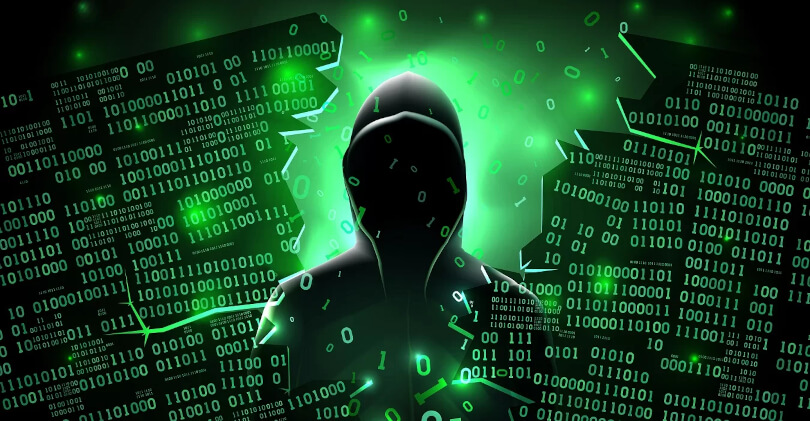When it comes to being a cybersecurity enthusiast, you not only have to have the knowledge but also appropriate vocabulary. This is hardly any surprise as whenever a new field of expertise comes to the scene, it inevitably spawns new words, acronyms, and phrases.
With that in mind, here are 50+ terms you should know:
- Access – Gaining control over a system’s information or knowledge.
- Adversary – An individual or a group with criminal intent
- Antivirus – A software that protects a computer from a malicious attack.
- Asset – Documents, information, resources, and other data that are of great importance.
- Backdoor – Instant access to a system without the need to log in.
- Botnet – Compromised or infected devices on an internet-connected network.
- BYOD (Bring Your Own Device) – Employees bringing and using their own devices, authorized by an organization.
- Cloud Computing – On-demand availability of system resources, typically computing power and data storage without a user’s active or direct management.
- Ciphertext – A plaintext encrypted with an encryption algorithm.
- Confidentiality – The state of keeping something private or secret.
- Cyber Essentials – Industry-supported, Government-backed policies to help protect organizations against online threats.
- Data Breach – The unintentional or intentional release of private or secure information.
- Decode – To convert an encoded message into comprehensible language.
- DoS (Denial of Service) – A cyber-attack that disrupts services by denying access to network resources or machines.
- DDoS (Distributed Denial of Service) – Using multiple hosts and users, hackers bombard a website with a tidal wave of requests to such an extent that it locks up the system and forces it to temporarily shut down.
- Exfiltration – Transfer of data without consent.
- Ethernet – The architecture for interconnecting computer systems via a wired local area network.
- EUD (End-user device) – A device capable of storing information, such as a PC, laptop, smartphone, tablet, hard drive, memory card, or USB flash drive.
- Exploit – An attempt to breach secure networks to gain access to digital assets.
- Forensics – An application of analysis and investigation to gather evidence from computing devices.
- Firewall – A security system that controls and monitors outgoing and incoming network traffic in conformity with predetermined rules.
- GDPR – General Data Protection Regulation – a law that regulates how organizations protect the personal data of EU citizens.
- Hacker – A cybercriminal who uses electronic devices to obtain unauthorized data access.
- Hacker (Black Hat) – Any hacker who attempts to gain unauthorized access to a system with the intent to cause mischief, damage, or theft. They can be motivated by greed, a political agenda, or simply boredom.
Hacker (White Hat) – A hacker who is invited to test out computer systems and servers, looking for vulnerabilities, for the purposes of informing the host of where security needs to be buffed up. Often called “ethical hackers”. - Hashing – An algorithm applied to data to validate that the information is not corrupted, tampered, or modified.
- ISO 27001 – A globally recognized standard for risk management of information security as per the ISMS (Information Security Management System) procedures and policies. ISO 27001 accreditation proves to stakeholders and clients that an organization is managing information security effectively.
- Integrity – This refers to data that has not been tampered or modified.
- Jailbreak – A process of removing device security restrictions, allowing its user to make modifications.
- Keystroke Logging – Also called keylogging, it refers to capturing a computer user’s keystrokes on a keyboard.
- Logic Bomb – A code inserted to set off malicious functions in software systems.
- Macro Virus – A virus programmed in the macro language. Microsoft Excel and Word are common applications featuring macro languages.
- Malware – Malicious software designed for disrupting, damaging, or gaining unauthorized access.
- Man in the Middle – Hackers who commit MITM attacks can break the Wi-Fi’s encryption and use it as a means of stealing personal data.
- Network – Connected computers linked through the internet.
- NIS Directive – A European Union directive on the security of information systems and networks.
- NIST Cybersecurity Standard – National Institute of Standards and Technology guidelines for US private enterprises to follow for improved detection and response to cyber-attacks.
- Outsider Threat – An external security threat by a group or an individual.
- Penetration Testing – Often referred to as ethical hacking, it is a simulated cyber-attack to assess a system’s security.
- Phishing – A fraudulent and criminal attempt to obtain sensitive information by disguising as a legitimate entity.
- Quadrant – Technology for making tamper-proof cryptographic equipment.
- Ransomware – Malicious software that disrupts a system and demands a ransom to make it workable again.
- Rootkit – Software that allow hackers to remotely access and control a computer or network.
- SaaS (Software as a Service) – A software delivery model on the cloud on a subscription basis.
- Security Perimeter – A boundary between networks with necessary safeguards against cyber-attacks.
- Steganography – A technique used to conceal data within ordinary messages and files to bypass detection.
- Two-Factor Authentication (2FA) – An authentication mechanism that grants system access to a user only after presenting two authorization evidence.
- Unsigned Data – A data type that holds positive values.
- Virus – A malicious program that replicates on infected computers.
- Worm – A malware type that spreads its copies from one computer to another.
- Zero-Day – An unaddressed or unknown software vulnerability.





